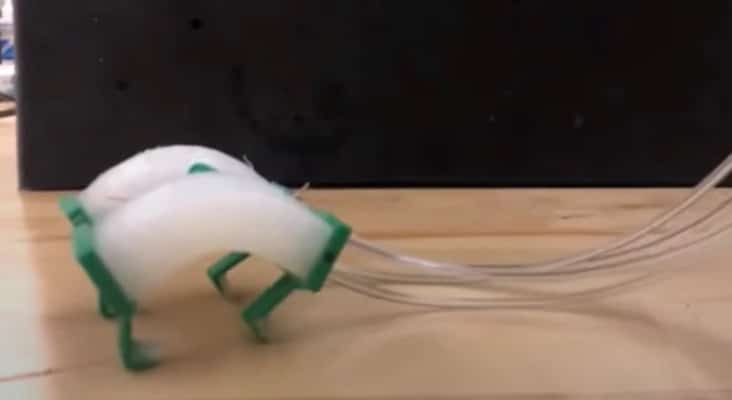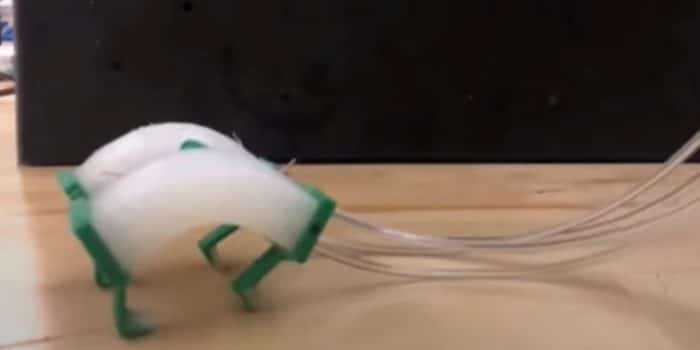The image that pops up in our head when we talk about soft-bodied robots is a robot similar to a caterpillar that slowly crawls. However, a new soft-bodied robot is about to change your perception by leaping just like a cheetah does.

Cheetah is the fastest land animal and runs by carrying out the flexing of their spines between two states that are stable. A consortium comprised of American scientists was working on replicating this particular motion in a soft-bodied robot. The result has been named LEAP – Leveraging Elastic instabilities for Amplified Performance.
This soft-bodied robot doesn’t feature any muscles or a biological spine. Instead, it comes equipped with two soft pneumatic actuators and a flexible spring-loaded mechanical spine. The two actuators are pumped with air and pumped out of them so that energy is stored and then released suddenly. That leads to the spring being triggered thus flexing the spine from one stable state to another. The bot is able to make use of this to exert force against the ground and leaping off of it.

The soft-bodied robot LEAP is capable of moving at a speed of 2.7 body lengths per second across terrain that is comprised of a flat and solid surface. In comparison, conventional soft robots have a maximum of 0.8 on land and 0.7 when swimming. The team has also managed to create smaller robots that measure in at 7 centimeters long and weigh in at 45 grams only. When these robots work together, they are able to move up against an item from all sides and can then lift it up from the ground by extending their spines simultaneously.
North Carolina State University’s Assistant Professor Jie Yin said, ‘Potential applications include search and rescue technologies, where speed is essential, and industrial manufacturing robotics. For example, imagine production line robotics that is faster, but still capable of handling fragile objects.’
A paper on the research has already been published in the journal Science Advances.


